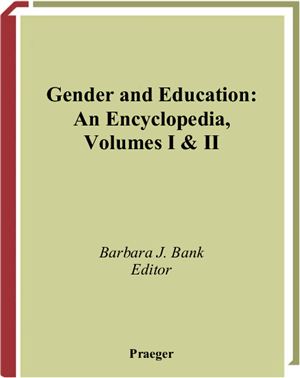Praeger, 2007. - 882 pages.
The editor is careful to explain in the preface that no single definition of gender was provided for the work's contributors. As a result, entries discuss the intersection of gender and education from multiple perspectives, including those of feminist, queer, multicultural, poststructural, and male theorists. The encyclopedia is divided into ten thematic sections that address how notions of gender have affected theories of education, issues in educational research, institutional contexts, the official and unofficial curriculum, measurements of achievement, teaching and administration, and educational policies. Each section begins with an overview that contextualizes the entries that follow historically and thematically. Each entry ends with a short bibliography that enables readers to explore further the topics the contributors address. One notable entry discusses useful sources of inteational and US data on gender and education….Recommended. Lower- and upper-level undergraduates.
The editor is careful to explain in the preface that no single definition of gender was provided for the work's contributors. As a result, entries discuss the intersection of gender and education from multiple perspectives, including those of feminist, queer, multicultural, poststructural, and male theorists. The encyclopedia is divided into ten thematic sections that address how notions of gender have affected theories of education, issues in educational research, institutional contexts, the official and unofficial curriculum, measurements of achievement, teaching and administration, and educational policies. Each section begins with an overview that contextualizes the entries that follow historically and thematically. Each entry ends with a short bibliography that enables readers to explore further the topics the contributors address. One notable entry discusses useful sources of inteational and US data on gender and education….Recommended. Lower- and upper-level undergraduates.

